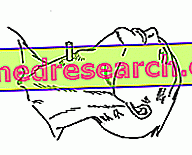Short review
The tracheotomy is a surgical operation aimed at ensuring effective ventilation when, due to tumors in the throat, masses of mucous secretions, localized or other edema, the patient experiences serious respiratory difficulties (or incapacity).

Risks of tracheotomy
Unlike what happened in the past, the experience gained in the field and the current anatomical knowledge of the trachea considerably reduce the risk of post-tracheotomy complications. Thanks to the improvement of the operating techniques and the quality of the cannulas used, the risks linked to a tracheotomy operation are almost comparable to those of a simple endotracheal intubation.
This does not mean, however, that the tracheotomy is a surgical procedure free from risks and dangers: when performed by not particularly expert personnel, worse still in emergency situations, the tracheotomy can still cause serious injuries to the patient.
It is therefore good to distinguish the risks to which the patient may face in the immediate post-intervention from those in the long term:
Risks in the immediate post-intervention | Long-term risks |
|
|
The risk of death of the patient subjected to tracheotomy is less than 5%.
To minimize the adverse events related to the tracheotomy, the surgeon must have a complete knowledge of the anatomo-physiological problems connected to the operation, as well as a certain ability in decannulation of the patient and in the restoration of natural airways.
Deepening: tracheotomy and dysphonia We have seen that one of the risks associated with tracheotomy is the alteration of the voice in the tracheotomized patient and the difficulty in expressing oneself. In such circumstances, to obtain satisfactory language it is possible to create a small air leak around the tracheal cannula using a sort of balloon (called cuff or valve) positioned on the same tube, useful for promoting adherence to the tracheal walls. In this way, the air that rises from the tube to the vocal cords (and to the mouth) allows the patient to express himself and speak. It should be emphasized, however, that in standard tracheotomy, dysphonia is generally reversible. The disorder is accentuated instead in the permanent tracheotomy (tracheostomy), so as to procure, in some patients, the total loss of the voice. |
Patients at risk
Post-surgery complications increase exponentially in some subjects: for example children, especially if they are new-born or otherwise very small, require special precautions by the surgeon, since the risk of damaging anatomical structures adjacent to the trachea is concrete.
Smokers, obese people and alcoholics are also other categories exposed to the risk of post-operative complications.
It should also be remembered that the presence of chronic diseases and respiratory infections, as well as the concomitant intake of drugs - such as cortisone drugs, tranquilizers or substances to promote sleep - can prolong the recovery time or, in some cases, increase the risk of post-operative complications. For this reason, before tracheotomy, it is the patient's duty to report to the doctor any pathologies, chronic disorders or the intake of certain medicinal specialties.
Post surgery: convalescence
The patient must always be assisted during the post-intervention period. The tracheal cannula clearly requires some maintenance and careful cleaning to minimize the risk of bacterial superinfections; for the same reason, the tracheal stoma (the hole made to insert the cannula) must also be kept strictly clean.
Assistance to the tracheotomized patient involves two very important basic rules:
- Maintaining the upper respiratory tract and constant monitoring of respiratory mechanics;
- The prevention of short and long term complications (first of all infections and inhalation of food or beverages)
How to behave when the tracheotomized patient returns home?
Once at home, the tracheotomized patient needs assistance from family or competent staff. It is first of all important to manage and keep the tracheal cannula clean, and to respect small but important precautions:
- Perform warm compresses near the incision site to relieve the perceived pain or discomfort
- Always keep the cutting area dry and clean
- If necessary (and after medical advice) take pain medication to mask the pain
- Avoid any possible contact with dirt particles, food, water and drinks: once aspirated, solid fragments and / or droplets could cause serious respiratory problems
- Wear soft scarves (not too tight) before leaving the house, to prevent dirt particles from entering the respiratory canal
- Respect any prophylactic antibiotic therapy prescribed by your doctor after tracheotomy
In the presence of abnormal symptoms, unbearable pain or doubts, the patient undergoing tracheotomy should immediately contact the doctor for further tests.



